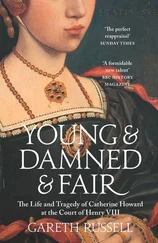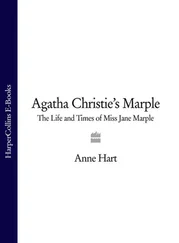In the autumn of 1841, three years before Adam Worth came into the world, the London art dealer John Bentley was making one of his annual forays through England’s Home Counties in search of rare paintings. An astute art connoisseur, Bentley owned a thriving dealership in the metropolis and was much in demand as a valuer of old masters. Over the course of his career, for pleasure and profit, he had made it a rule to spend a few weeks every year wandering through the small villages and towns of England making enquiries as to whether any of the local residents had works of art or other antiques they wished to value or sell. Many a bargain was to be found in this way, and the practice enabled Bentley to shed, for a while, the cares and strains of metropolitan life in a bucolic and nomadic quest for art.
In this particular year, Bentley’s enjoyment of his annual outing had been sharply diminished by a stinking cold which had settled both on his chest, making him cough and sneeze, and on his mind, making him grumpy.
On the morning of 17 September, Bentley’s ill-humour and streaming nose were suddenly forgotten when his researches brought him to the small sitting room of one Anne Maginnis, an elderly English schoolmistress long retired. For there, above Mrs Maginnis’s fireplace, grimy but unmistakable, was the portrait of Georgiana, Duchess of Devonshire, by Thomas Gainsborough. Quite how the widow Maginnis, who had little money and even less interest in fine art, managed to get her hands on Gainsborough’s famous missing portrait has never been adequately explained. According to one account, the old lady ‘spoke of it as the portrait of a relative of hers, and that it was bought, not as the picture of the beautiful Duchess, but merely as “a Gainsborough”.’ Bentley never enquired too closely into how she had obtained the great picture, partly out of tact, but largely because he had immediately identified the missing duchess, knew a sucker when he saw one, and wanted to buy it, cheap.
No one can be sure quite what had happened to the painting in the intervening years. One biographer quotes the Reverend Henry Bate as referring to two Gainsborough portraits of the duchess, ‘one of which Lady Spencerhas, the other, we think, is in Mr Boothby’s possession’. One possibility is Charles Boothby-Skrymshire, also known as ‘Prince’ Boothby, a man of fashion so nicknamed on account of his egregious social climbing and his tendency to ‘abandon friends as soonas he met people of higher social position or rank’. He was believed to be a close friend of the Devonshires, and may have obtained the picture when the duke decided he no longer wanted it. Prince Boothby committed suicide on 27 July 1800, whereupon his effects were ‘dispersed’. Another candidate for the elusive ‘Mr Boothby’ is Sir Brooke Boothby of Ashbourne Hall, just twenty miles from Chatsworth, a scholar, poet, friend of Rousseau and Charles James Fox, satirist and art collector who owned at least one other portrait of the duchess as well as a crayon drawing and was acquainted with his ducal neighbours. Sir Brooke may have sold the Gainsborough in 1792, when he suddenly ran out of money. Whichever Boothby had briefly owned the Duchess, the portrait had completely vanished until it cropped up again in Mrs Maginnis’s tiny cottage under Bentley’s knowing and excited gaze. The elderly woman plainly had no idea what the painting was, or what it was worth, for in a singular act of vandalism some years earlier she had cut off the Duchess’s legs just above the knee, shortening the painting to three-quarters of its original size and consigning Georgiana’s feet to the fire. Henry James would criticize the ‘very wooden legs’ in Gainsborough’s portraits, but that was hardly a reason for burning them, and Mrs Maginnis’s brainless surgery left the portrait out of balance: Georgiana seems almost overpowered by her vast hat. But even in these sadly reduced circumstances, Bentley recognized Gainsborough’s Duchess, admired her still-saucy smile, and scented a bargain.
Many years later Bentley’s grandson, one Sigismund Goelze, explained what had happened, recalling his grandfather’s discovery in a letter to The Times: ‘It was then hangingin her sitting-room, over the chimney piece, and, knowing that originally the picture was painted full-length, he asked her how it was that it only showed to the knees. The old lady told him that she had cut it down to fit the position it then occupied, and added that she had burnt the piece which she had cut off.’
Although Bentley could not be certain that this was indeed the Duchess, his expert’s hunch told him to take a gamble. The widow Maginnis, while no expert in matters artistic, knew the value of money and was, moreover, an experienced haggler. After some lively negotiations lasting several hours, the old lady agreed to let the art dealer take the painting away on the promise that he knew a man who might pay as much as seventy pounds for it. Bentley was careful not to mention whom the picture portrayed, for even thirty-five years after her death Georgiana’s remained the sort of household name that could only increase the expectations of an impoverished English schoolmistress.
On 6 October Mrs Maginnis wrote:
Sir, I am obligedby your prompt attention to the disposal of the picture, and will take £70 for it, ready money, if the gentleman will give it, as I feel assured you will make the most you can of it.
Hoping you are in better health than when I last saw you, I remain, Sir, your obedient servant, Anne Maginnis
In the end Bentley managed to persuade Mrs Maginnis to let him keep the portrait for the sum of fifty-six pounds, one of the most advantageous deals he ever made. According to his grandson, Bentley ‘never had the slightestdoubt as to the genuineness of the picture; and to an artist it is obviously impossible for any copyist to successfully reproduce the swift, spontaneous touch of the greatest master of female portraiture’. The dealer carried the painting to London, where he cleaned it up and proudly displayed the Duchess to his admiring friends. ‘The picture remainedin my grandfather’s possession for some time, and my mother still remembers it hanging in the dining room of her old home in Sloane Street,’ Goelze wrote.
Bentley subsequently agreed to sell the Duchess to his friend and fellow connoisseur, a silk merchant named Wynn Ellis –‘characteristically declining to take any profit, so I have been told’, Goelze reported. ‘Mr Bentley was the intimatefriend and adviser of most of the great collectors during the early years of the late reign; but he made it a rule never to receive any remuneration for his services in assisting to form collections of pictures, a habit which I fear must in these days seem curiously Quixotic. The reason he gave was that in this way only could he prove his advice to be absolutely disinterested.’
Wynn Ellis (probably the painting’s fifth owner) started out in business, in 1812, as a ‘haberdasher, hosier and mercer’ and ended up as owner of the largest silk business in London and a man of immense wealth, excellent taste and profound views. As a Member of Parliament for Leicester and a Justice of the Peace in Hertfordshire, where in 1830 he purchased a large estate called Ponsborne Park, Ellis advocated the repeal of the Corn Laws and considered himself an advanced liberal. But his most trenchant views happened to address a pastime dear to Adam Worth’s heart, for Wynn Ellis ‘had an intense dislikeof betting, horse-racing and gambling’. Ellis did not gamble on anything, and least of all on the great paintings which he purchased with his grand fortune. John Bentley, on the other hand, was a most canny art dealer who did not scruple to extract a tough bargain from an elderly schoolmistress. So whatever his grandson’s claims and the demands of friendship, it would have been far more characteristic of the man had Bentley charged Ellis a small fortune for the painting. Sadly, we will never know how much profit Bentley made on his investment of fifty-six pounds for the silk manufacturer – like other, later owners of the portrait – flatly declined to say what he had paid for it and allowed the rumour that he spent just sixty guineas on the purchase to circulate uncontradicted. Ellis sent the painting to be engraved by Robert Graves of Henry Graves & Co., and the result, simply identified as Gainsborough’s Duchess of Devonshire, was published on 24 February 1870.
Читать дальше












